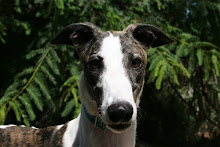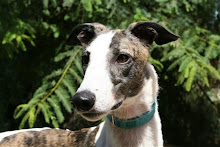Toy Breeds are the official lap dogs of the canine world. They were selectively bred down from larger breeds and designed to be companions or "comforters" for their humans.
Most Toys look like diminutives of their source breed: Italian Greyhounds look like teeny tiny Greyhounds. Toy Poodles, if well bred, are just smaller versions of Miniature and Standard Poodles. Pomeranians are clearly members of the Spitz Family. But the largest sled a Pomeranian could pull would be doll sized. A Pug's face reveals Mastiff and Bull Dog origins. Silky Terriers and Yorkshire Terriers are--surprise--Terriers!
Toys are minimal bother in terms of space and quantity. They don't eat a whole lot of food. Medications and treatments that are sold by weight or count cost less for a Toy than for, say, a Golden Retriever. I could perform poop patrol for Mame, our Toy Poodle, using two Kleenex, if necessary.
It is understandable that members of this group are frequently recommended to individuals or families considering a First Dog Ever. Looking at all factors, perhaps the Pug, a Toy, is The Easiest Dog to Own. It is small. It doesn't have serious grooming challenges. It does not require much exercise.
However. There is always "However."
Many Toy Breeds require intensive grooming, both by the owner and by a professional. These are the dogs that were originally bred for owners with plenty of leisure time for such pursuits--and servants, who could always wield a brush if the owner lost interest.
Even more importantly, Toy Breeds were meant to be CLOSE companions to PEOPLE. They are not happy to be left alone all day. They are certainly not suited to long hours in a backyard or garage.
My best friend has rescued many toy dogs from neglectful situations. It is horrifying to see the emotional cost these little dogs pay when humans ignore the purpose for which they were bred. I promise you, a 4, 5, 6 pound dog can be turned into such a nervous wreck that it is VERY hard to rehabilitate. Bruiser, a Maltese with perfect show points, came to live with my friend four years ago. She now confesses, that when she saw him "in action", she almost backed out of her promise to take him. He barked and ran in circles incessantly. He approached her and backed away when she reached out to pet him. When guests visited, he latched onto trouser legs, trying his best to keep people from moving from room to room. And potty training was a challenge. He was so small and quick, the damage could be done before he was caught. Medical problems included rotten teeth, ear infections, and digestive difficulties.
Today, after four years of consistent love and care, Bruiser is a New Dog. He weighs a healthier five pounds, up from under 4 pounds when he was rescued. He is profoundly attached to my friend and her husband, but accepts short separations without hysterical protests. He understands that visitors come and go. He might bark and try to discourage departures, but he knows it's a losing battle. Recently, he has even come up to sit on my lap.
But think. Three years of neglect. Four years of rehabilitation. There just aren't enough people with time, patience, and willingness to rehab all the Toy Dogs that are being treated as toys--to be left or played with at whim, without any regard for their inbred needs.
Just yesterday, a woman at my local knit shop had a rescued toy with her while she shopped. This little Pomeranian/Maltese mix was just what a Toy Dog should be; on leash, perfectly behaved, close to her human, sharing in her human's daily life and activities, and graciously accepting, but not soliciting the greetings of the people she met.
The joys of life with a Toy are many, if you understand them and treat them as they were bred to be treated.
Subscribe to:
Post Comments (Atom)
.jpg)
.jpg)
.jpg)

No comments:
Post a Comment